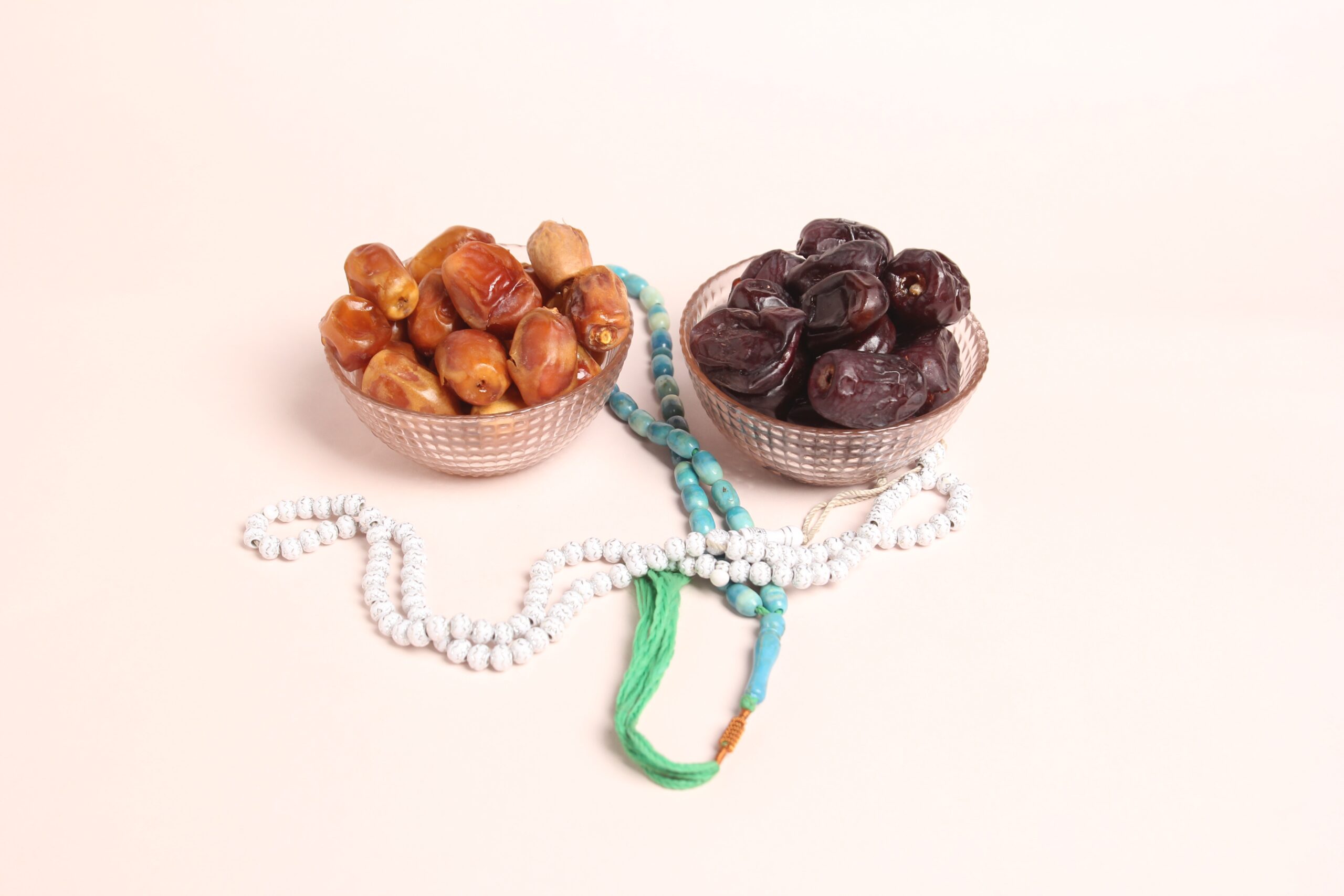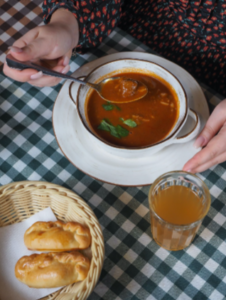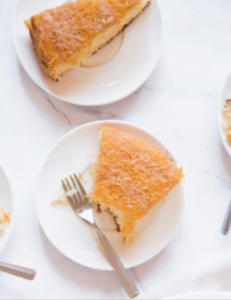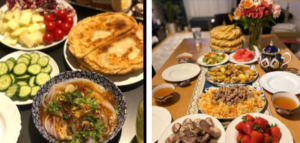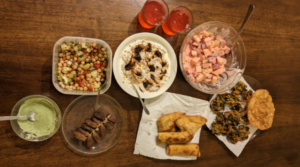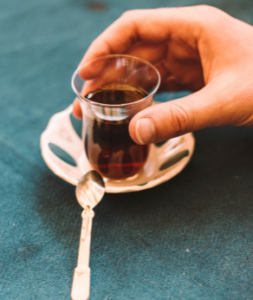What Does the Iftar Table Look Like? Delicacies from 10 countries
Fasting during the month of Ramadan forms one of the 5 essential pillars of the Islamic faith. It’s a month of reflection and building a stronger relationship with Allah (the Arabic name for God). An important part of Ramadan is fasting from sunup to sundown. Muslims all over the world have a morning meal Suhoor and then break their fast with an evening meal, the iftar.
In most traditions, the iftar time looks a lot like a celebration. Breaking the fast with water and dates (according to the sunnah of the Prophet Muhammad PBUH) is common in all cultures and then the meal transitions into a unique traditional feast. You can expect sophisticated meals prepared with love and care.
So, are curious as to what special iftar items you might find in different cultures? If that’s the case, then follow along as we introduce you to delicacies served at the iftar table from across the world.
Algeria
An Algerian iftar table is incomplete without some meat-based dishes. One popular snack is the crispy and flavourful ‘Bourek’. This snack is made using thin Phyllo dough sheets and filling them with minced meat (typically beef). These are then folded into the shape of cylinders and then fried in hot oil.
Another staple is the traditional ‘Algerian shorba (soup)’. It’s traditionally made with lamb meat and various vegetables. This Algerian comfort food takes some practice and needs hours to prepare but it’s totally worth the effort! Although its enjoyed on its own as well, ‘Khobz Eddar’, the homemade Algerian leavened bread usually accompanies the shorba.
Saudi Arabia
The custom in Saudi Arabia is to gather in the home of the head of the family and break the fast together in a big gathering. Saudis break their fast in 2 stages. First, they enjoy water and dates to break their fast along with ‘qahwa’, the Arabic coffee.
The second course consists of soups and fried snacks. The Saudis enjoy freshly fried meat filled ‘Sambusas’, and a variety of soups. In the Western region ’Hab’ is a fan favourite barley-based soup. Another fulfilling dish in this region is the ‘Foul’, a bean-based dish, which can be enjoyed as a salad. And of course, no iftar in The Kingdom can be complete without ‘Vimto’, a grape, blackcurrant, and raspberry concentrate, which is diluted and enjoyed with ice.

Finally, the Saudi iftar comes to an end after serving some sweet ‘Kunafa’, a dish made with almonds, bananas, cream and cheese.
China (Uyghur Region)
The Uyghur iftar consists of warm comforting soups, chicken and rice, and handmade noodles, served with fruits and vegetables. A popular dish on the Uyghur iftar spread is the meat ‘Naan’.
Morocco
The Moroccan iftar spread is filled with nourishment and flavour. Soups are the star of the show. ‘Harira’, a lamb-based warm legume soup, is an iftar essential. Lentils are also a popular savoury iftar item. Iftar snacks include fried ‘Sambusas’ and ‘Rolls’. In Morocco, fresh juices and milkshakes are used to quench the thirst from a day of fasting.
Moroccans also enjoy satisfying their sweet tooth during iftar. One popular Moroccan iftar dessert is the ‘Chebakia’, a rose-shaped pastry, which is first fried, then coated with a sweet syrup, and finally garnished with sesame seeds.
Pakistan
Food is at the heart of Pakistani culture and this is especially evident in the month of Ramadan. The preparations for iftar in Pakistan start hours before it’s time to break the fast and the iftar spread is decorated with traditional fried snacks, salads, and broths.
A staple of a Pakistani iftar is ‘Pakoras’, made of vegetables coated in chickpea flour before frying. More fried snacks are served alongside pakoras which include ‘Samosas’, ‘Kachoris’ and ‘Rolls’. Kachoris are prepared with spicy meat stuffing in a special flaky pastry which is then fried.
A typical salad served during Ramadan includes ‘Chana Chaat’, a spicy chickpea salad. A yoghurt-based sweet and tangy dish called ‘Dahi Bhallay’ consists of dumplings made with chickpea flour or milled lentil flour soaked in yoghurt and topped with tamarind sauce and a traditional spice mix. You will rarely witness a Pakistani iftar table without the famous ‘Fruit Chaat’, made with seasonal fruits topped with traditional spices. Sometimes this fruit salad is also served with cream and sweet syrup turning it into a rich dessert. A rose-based drink ‘Rooh Afza’ is a refreshing retreat from thirst and heat. Especially during Ramadan people abandon all soft drinks and juices and enjoy Rooh Afza during iftar.
Appetisers are then followed by the main course, the most notable dishes for which are ‘Nehari’ and ‘Haleem’ which are served with ‘Naan Bread’. To finish off, the ‘Masala Chai’ and/or ‘Qehwa’ are enjoyed.
Turkey
The Turkish Ramadan spread is pretty elaborate as well with food and drinks that are both delicious and fulfilling. The meal begins with a selection of light ‘Meze’, finger foods, served before the main course. There’s usually a yoghurt-based option along with cheese and olives that everyone shares.
The main course consists of special soups, bread, slow-cooked meat, and vegetable dishes. ‘Ezogelin’ a lentil-based soup, ‘Yayla yoghurt’, and ‘Mercimek corba’ are popular soups served on the Turkish iftar spread. A special type of leavened bread which is the size of a dinner is served along with the soups for the main course. Popular meat options include ‘Hunkar Begendi’, ‘Kunzu Tadir’, and ‘Tavuk Guvec’. And finally, olive-based vegetable options like the popular ‘ZeytinYagli’ complete the main course.
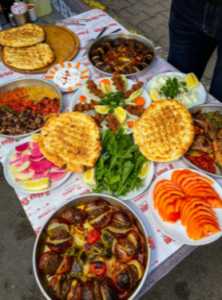
Finally, for dessert, the Turkish enjoy sweets drenched in sugar syrup like ‘Baklava’, ‘Kaymakli kayisi’, and ‘Kunefe’.
Indonesia
The Indonesian iftar menu consists of many banana and coconut-based dishes and fruits. ‘Kolak’ for example is an amazing opening dish. It’s prepared from fruits like pumpkin, sweet potato, and banana drenched in a brew of coconut milk, palm sugar and vanilla. Another coconut-based sweet dish is the ‘Kicak’.
Indonesians also enjoy unique fish and meat dishes. One such unique dish is the ‘Sotong Pangkong’ made from grilled cuttlefish. This savoury dish is usually served with peanut sauce and/or shrimp sauce. ‘Sate Susu’ is another savoury delicacy made from cow udders that have been seasoned with traditional spices before being grilled. It’s not only delicious but is known to boost stamina, especially for people who have physically demanding jobs while fasting.
And finally, special Ramadan drinks in Indonesia like ‘En Timun Suri’ and ‘ Es Pisang Ijo’ are popular in Indonesia.
Palestine
The Palestinian iftar starts off with appetisers and ends with the main course. Appetisers range from humus to various types of pickles, for example, eggplant, carrot, lemon, and cucumbers. ‘Sambusas’ are often spotted on the iftar table filled with cheese or meat. No iftar in Palestine is considered complete without a fresh salad to go with it.
For the main course, one of the most special Palestinian iftar meals is the ‘Al-Musakhan’. This is a meal reserved for special occasions like weddings, feasts, and Ramadan. It’s prepared with chicken and the traditional ‘Saj’ bread topped with onion juice, fried potatoes, and nuts.
Finally, among the most beloved drinks served during Ramadan are carob, hibiscus, and tamarind-based fresh drinks. And of course, a great dessert to complete the meal may consist of Qatayef, a sweet dumpling loaded with cream and nuts, or you could also come across a sweet ‘Kunefe’ or ‘Namoura’ if you’re lucky.
Somalia
A staple for a Somali iftar is a special type of sourdough pancake called ‘Injera’. The Injera can be eaten on its own, with olive oil, or even maple syrup. However, during Ramadan, it is accompanied by carefully prepared sides like fried kidneys, and juicy meat cubes. Somalia is another region where their cuisine is incomplete without meat-filled ‘Sambusas’. A traditional Somali Ramadan drink is watermelon juice which does wonders for hydration. And finally, a Somali iftar can not be considered complete without some type of fruit being served.
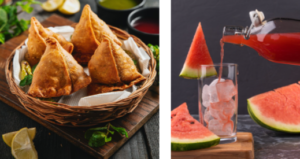
Yemen
Despite the present condition of the country, Yemen is known well for its delicious cuisine. Some mouth-watering dishes that the Yemenis crave especially during Ramadan include soups, meat-based dishes, as well as the Middle-Eastern favourite, ‘Sambusa’.
One such rich traditional Yemeni soup served during the Holy month in the Aden region is the ‘Shurbah Baydha’ or white soup. Sometimes this soup is served with a red sauce prepared with onions, spices, and tomatoes and is therefore called ‘Shurbah Hamra’ or red soup. In other parts of Yemen, this soup can sometimes be made with milk and sugar instead. Another refreshing iftar option is the Yemeni spicy yoghurt dish called ‘Fatta’. It essentially is a bread soup in which Yemeni bread is made soggy and mushy with meat broth before being served in yoghurt. A heartwarming meat dish popular in Yemen during Ramadan is the ‘Lahma Mahshoosha’, a type of broiled meat.
For dessert, a Yemenis special is the creamy ‘Bulghur pudding’ which is a lot like a semolina pudding. Finally, an iftar in Yemen comes to an end after tea or coffee is served.
Conclusion
During Ramadan Muslims all over the world go through the same process of fasting. No matter where you come from, whether you’re rich or poor, everyone experiences the pains of the less fortunate the same way for an entire month each year.
This special time of the year is celebrated in different cultures in different ways. Through food we are able to understand and appreciate the beauty of different cultures indulging in the same cause for celebration.


